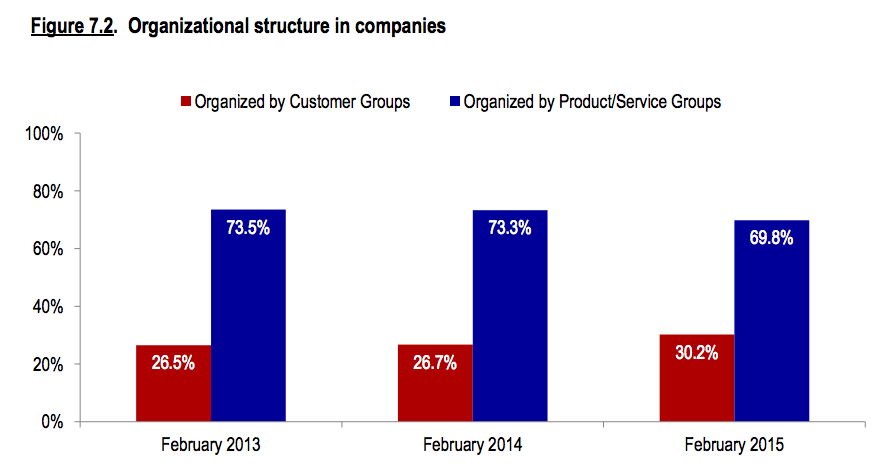Twice a year Duke University’s Fuqua School of Business—along with McKinsey and the American Marketing Association—does a big CMO survey. I love it. And the reason I love it is because it provides a consistent view into how marketing heads feel about the business climate, their marketing efforts, and other colleagues within their organization.
There are some great insights from this year’s survey, for example, that CMOs are under more pressure than ever before to quantify the value of marketing. But the number I find most fascinating in this round is the pace of change in how marketing is structuring itself around customers as opposed to product lines. In fact…
30.2% of marketing leaders said their organizational structure is based on customer groups.
This is a significant increase over the two previous years (26.7% in 2014 and 26.5% in 2013).

We’ve talked a lot about the concept of organizing marketing (particularly content) around buyers rather than product lines. We refer to it as Intra-Marketing Alignment, and the basic concept is that in order to influence and facilitate the buyer’s journey, you need to deliver content that speaks to their needs and interests first and your product or services second.
But this is difficult to do when much of B2B marketing strategy is organized around our solutions, which then commands our time and attention and thus our resources.
This latest data from the CMO survey suggests that marketing leaders are starting to see the value of focusing on customer interests instead of products.
Some marketing executives are already implementing that approach, like LeadMD’s Justin Gray.
“If you look at a business that really embraces content marketing,” Gray says, “you probably don’t see a sell sheet of product brochure on their website. You see how people are using the solution to better their everyday lives.”
But “buyer-centric content” adoption isn’t yet to the level we’d hope. 30% compared to nearly 70% is still a massive gap. But the fact that the buyer’s journey is becoming more independent seems to be influencing how B2B marketing organizations structure their teams.
Expect that as digital and mobile allows buyers to become even more independent for their research, more marketing teams will structure around buyer personas.

